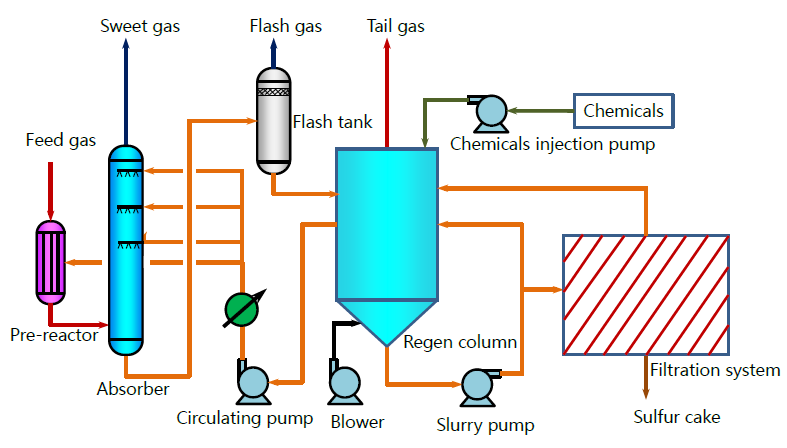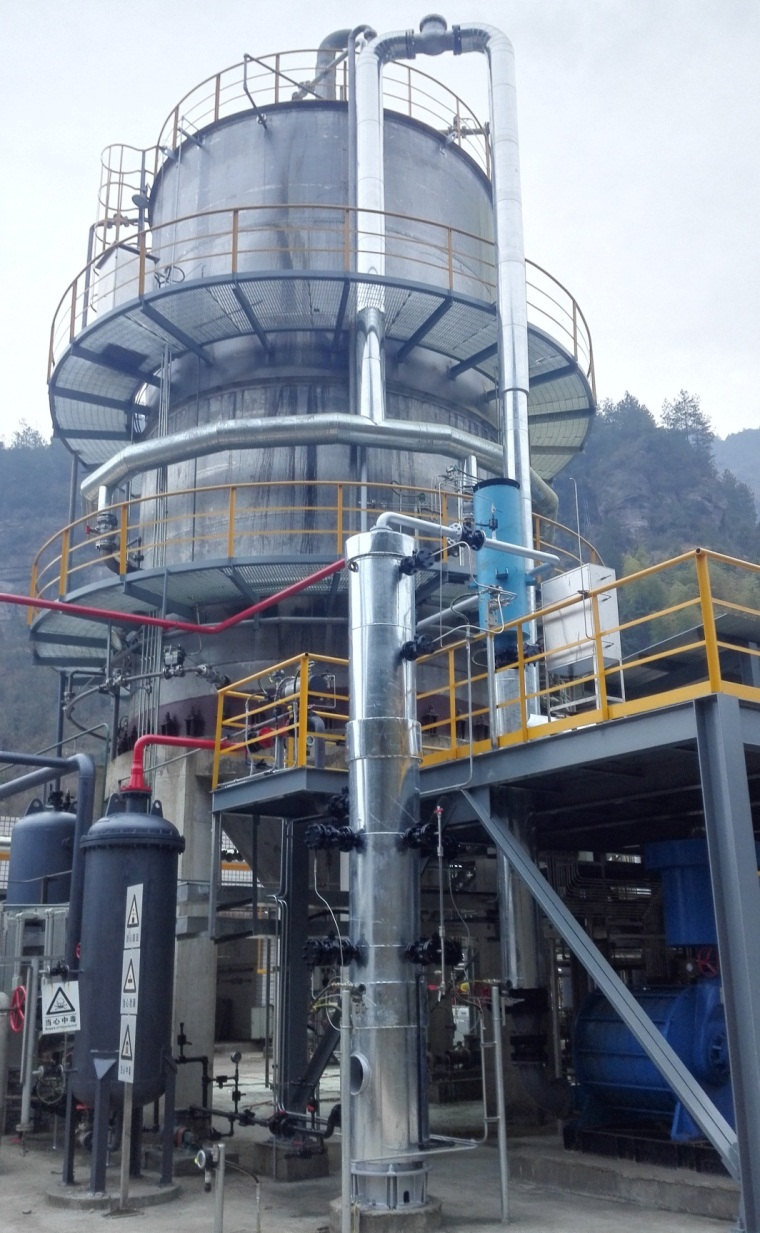Sulfur Removal & Recovery
| Technology Overview | Flow Diagram | Project Case |
Liquid phase oxidation process for sulfur removal utilizes complex iron ions as the catalyst, hydrogen sulfide dissolves in the solution when feed gas and catalyst solution contact each other. Hydrogen sulfide-rich solution is regenerated by air entering the oxidation tower. By circulation, hydrogen sulfide will be oxidized to sulfur, and to become a filter cake through filtration. This technology can also adopt self-circulation way, combining absorption column and oxidation column, so absorption and regeneration can happen at the same time.
Technical Characteristics:
Integration of sulfur removal and recovery
Low investment
Low energy consumption
Nontoxic and harmless catalyst
High efficiency in organic sulfur removal
No discharge of liquid waste
Device characteristics:
Skid-mounted device available for below 10t/d scale; modular device available for 10t/d to 30t/d scale.
Working Conditions and Application Areas
Applicable scale for a single device: 0.5t/d~30t/d
Purity of product gas(H2S content): as low as 1ppm
Applicable gas source pressure: atmospheric pressure~30MPaG
Applicable gas temperature: 0~60℃
Application Areas:
Sulfur removal for natural gas and associated gas
Sulfur removal for sour tail gas and sulfur recovery
Sulfur removal for Claus device tail gas
Sulfur removal for refinery gas
Sulfur removal for coke oven gas
Sulfur removal for biomass gas
Sulfur removal for syngas

